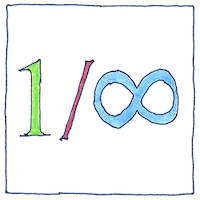John Wallis
mathematics

|
Infinite and infinitesimal
In 1635, Bonaventura Cavalieri introduced infinitesimals, which he called indivisibles, as a means of calculating areas and volumes. John Wallis’s treatise on conic sections clarified Decartes’ work on analytic geometry and introduced the symbol ∞ for infinity and the symbol 1/∞ for the infinitesimal. Wallis’s work Arithmetica Infinitorum finds the area under a curve by integration and established the principle of interpolation to derive the value of π. Thus Wallis, James Gregory, and Isaac Barrow contributed to the development of integral calculus put to use by Isaac Newton and given modern notation by Gottfried Wilhelm Leibniz.
Infinity symbol
The infinity symbol, ∞, the digit 8 on its side, traces a closed path without an end. More could be said approaching the symbol but not what it symbolizes unless turning into itself.
Negative numbers
John Wallis introduced the number line and interpreted negative numbers as values greater than infinity rather than as less than nothing. Me, I think of negative numbers as mere arithmetic conveniences and I’ve learned there are positive infinities greater than infinity.



James Gregory stated and proved the fundamental theorem of calculus for a special class of curves; Isaac Barrow proved the fundamental theorem in general, showing that differentiation and integration are inverses of each other. Isaac Newton was a student of Isaac Barrow.
See also in The book of science:
Readings in wikipedia: